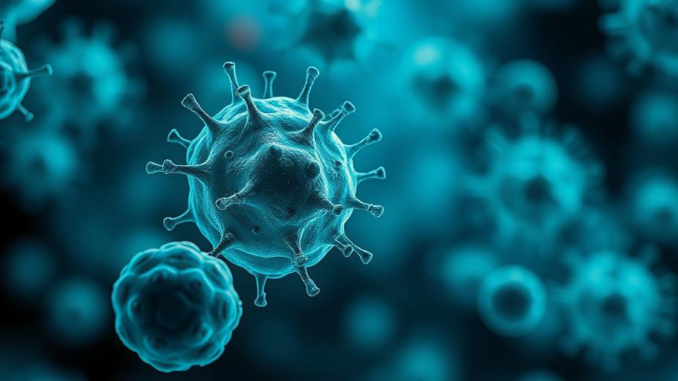
Summary
ALA-CART, a supercharged CAR-T cell therapy, has shown promise in combating treatment-resistant cancers. This next-generation therapy enhances the effectiveness and longevity of CAR-T cells, enabling them to target cancer cells previously undetectable by traditional CAR-T therapies. The development of ALA-CART represents a significant advancement in cancer treatment and offers renewed hope for patients with resistant cancers.
Secure patient data with ease. See how TrueNAS offers self-healing data protection.
** Main Story**
We’ve seen some incredible progress in cancer treatment lately, and CAR-T cell therapy really stands out. It’s this really clever way of using a patient’s own immune system to fight the disease. Pretty amazing, right? But here’s the thing: some cancers are real tough nuts to crack. They develop resistance to the usual CAR-T treatments, which, sadly, leads to the treatment failing and the cancer coming back. Now, though, there’s this new, supercharged version of CAR-T therapy called ALA-CART. It’s giving new hope to patients battling these resistant cancers, and it might be the breakthrough we’ve been waiting for.
ALA-CART: The Next Level of Therapy
Researchers at the University of Colorado Anschutz Medical Campus developed ALA-CART. It stands for adjunctive LAT-activating CAR-T cells. Basically, it’s a next-gen therapy that’s been fine-tuned to be more effective at wiping out cancer cells, even the ones that have managed to slip under the radar of traditional CAR-T therapies. The initial findings, published in Cancer Cell, suggest that ALA-CART could really improve the outcomes for patients dealing with resistant cancers.
How CAR-T Cell Therapy Actually Works
So, how does all this magic happen? Traditional CAR-T cell therapy involves taking a patient’s T-cells – those white blood cells that are vital for our immune response. These T-cells are then genetically modified to express chimeric antigen receptors, or CARs, on their surface. Think of CARs as engineered proteins that help T-cells recognize and latch onto specific antigens, which are markers found on cancer cells. Once these modified T-cells, now armed with CARs, are reinfused into the patient, they become these supercharged hunters, circulating through the body and destroying any cancer cells that display the targeted antigen. It’s a bit like giving your immune system a GPS to track down and eliminate the cancer, quite cool, when you think about it!
Beating Resistance with ALA-CART
Traditional CAR-T cell therapy has had some pretty impressive success, especially with certain blood cancers. However, and this is a big however, some cancer cells are sneaky and can evade detection by these modified T-cells. This resistance, unfortunately, can lead to treatment failure and the cancer returning. ALA-CART is designed to tackle this problem head-on by boosting the ability of CAR-T cells to spot and attack those resistant cancer cells. It’s like giving those T-cells an extra pair of eyes, right?
In preclinical studies – they used human T-cells and leukemia cells in specialized mouse models – the results were really promising. ALA-CART cells were able to effectively target and eliminate acute lymphocytic cancers that were resistant to traditional CAR-T cell therapy. If these findings hold up, ALA-CART could lead to longer-lasting remissions, even in patients who haven’t responded to other treatments. You start to think that maybe there really is hope here for some really tough cases.
What Could This Mean for Patients?
Apart from being more effective against resistant cancers, ALA-CART might also have a better side effect profile than traditional CAR-T therapies. I mean, further research is definitely needed to confirm these early signs, but, if it turns out to be true, that would be a game-changer for patients. Less side effects means a better quality of life during treatment, and that’s a huge win.
The development of ALA-CART? A pretty big step forward in cancer immunotherapy. ALA-CART offers renewed hope for patients dealing with resistant cancers, especially those who have run out of other options. As research progresses, ALA-CART has the potential to revolutionize cancer treatment and improve lives for countless individuals affected by this terrible disease. And as of today, March 13, 2025, ALA-CART is still in preclinical stages of development. Clinical trials will be vital to really see how safe and effective it is in humans, and to figure out where it fits in the treatment of different types of cancer. I mean, the researchers are optimistic, and, honestly, I am too, that ALA-CART will pave the way for better and longer lasting cancer therapies in the coming years. Who knows, this could be the turning point we’ve been waiting for, it’s nice to be hopeful anyway.


So, these souped-up T-cells have like, extra eyes for cancer? Does that mean if I squint hard enough at a tumor, my regular T-cells might level up? Asking for a friend… who *really* hates cancer.
Haha, love the enthusiasm! While squinting might not directly power-up your T-cells, the idea of boosting our natural defenses is spot-on. ALA-CART focuses on enhancing T-cell recognition through clever engineering, essentially giving them better tools to find and fight cancer. Let’s hope it leads to some real breakthroughs!
Editor: MedTechNews.Uk
Thank you to our Sponsor Esdebe